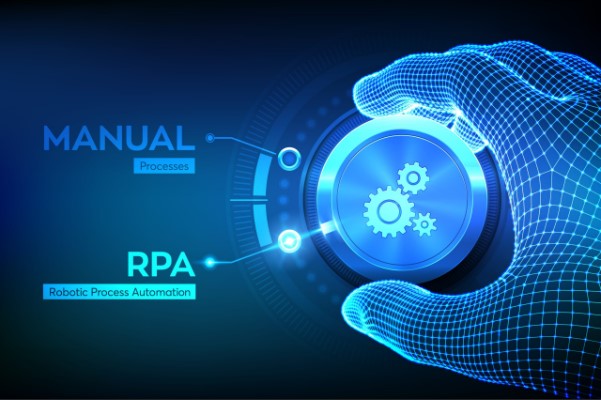The Impact of Artificial Intelligence and Automation
February 21, 2025

Artificial Intelligence (AI) and automation are reshaping the landscape of business processes, enhancing customer service, and revolutionizing operational efficiency. As organizations strive to remain competitive, understanding the implications of these technologies is crucial. In this blog, we’ll explore the impact of AI on business processes, how it can enhance customer service and support, and the implementation of robotic process automation (RPA) in enterprises.
The Impact of AI on Business Processes
- Increased Efficiency
AI technologies streamline operations by automating repetitive tasks that would otherwise require significant human effort. This automation reduces the time taken to complete tasks and minimizes the risk of human error, leading to greater efficiency in business processes.
- Data-Driven Decision Making
AI systems can analyze vast amounts of data quickly and accurately, providing valuable insights that support decision-making. Organizations can leverage predictive analytics to anticipate market trends, understand customer behavior, and make informed strategic choices, thus improving overall performance.
- Enhanced Productivity
By automating mundane tasks, employees can focus on higher-value activities that require creativity and critical thinking. This shift not only boosts productivity but also increases job satisfaction, as employees engage in more meaningful work.
- Cost Reduction
Implementing AI-driven solutions can lead to significant cost savings. Automating processes reduces labor costs and enhances operational efficiency, ultimately resulting in a better bottom line. Additionally, AI can help identify areas where costs can be further optimized.
- Improved Quality and Consistency
AI technologies can enhance the quality of products and services by ensuring consistency in execution. For example, in manufacturing, AI can monitor production lines to maintain quality standards, reducing defects and ensuring customer satisfaction.

How AI Can Enhance Customer Service and Support
- Personalized Customer Experiences
AI enables businesses to analyze customer data and preferences, allowing for personalized interactions. Chatbots and virtual assistants can provide tailored recommendations and support, enhancing the overall customer experience and increasing loyalty.
- 24/7 Availability
AI-powered chatbots and automated systems can provide round-the-clock support, ensuring that customer inquiries are addressed promptly, even outside of regular business hours. This availability enhances customer satisfaction and reduces response times.
- Efficient Query Resolution
AI can help triage customer queries, directing them to the appropriate support channels or providing immediate responses for common issues. This not only speeds up resolution times but also frees up human agents to handle more complex inquiries.
- Sentiment Analysis
By utilizing AI-driven sentiment analysis tools, businesses can monitor customer feedback across various channels. This insight helps identify areas for improvement and allows organizations to proactively address customer concerns, fostering a more positive relationship.
- Continuous Learning and Improvement
AI systems learn from interactions and feedback, enabling continuous improvement in customer service strategies. By analyzing past interactions, businesses can refine their approaches, leading to more effective support and enhanced customer satisfaction.

Implementing Robotic Process Automation (RPA) in Enterprises
- Identifying Automation Opportunities
The first step in implementing RPA is to identify processes that are repetitive, rule-based, and prone to human error. Common areas for RPA implementation include data entry, invoicing, and report generation. By assessing workflows, organizations can determine where automation can provide the most value.
- Choosing the Right RPA Tools
Selecting the appropriate RPA tools is critical for successful implementation. Factors to consider include ease of use, scalability, and integration capabilities with existing systems. Popular RPA tools like UiPath, Automation Anywhere, and Blue Prism offer various features to meet organizational needs.
- Engaging Stakeholders and Building a Team
Successful RPA implementation requires collaboration across departments. Engaging stakeholders and forming a dedicated RPA team ensures that all perspectives are considered, leading to a smoother transition and greater buy-in from employees.
- Designing and Testing Automation Workflows
Once processes are identified and tools selected, organizations should design automation workflows. It’s crucial to conduct thorough testing to ensure that the automated processes function as intended and integrate seamlessly with existing systems.
- Monitoring and Optimizing RPA Solutions
Post-implementation, it’s important to continuously monitor RPA solutions to assess performance and identify areas for optimization. Regular reviews and updates can enhance the effectiveness of automation initiatives, ensuring that they continue to meet evolving business needs.
Artificial Intelligence and automation are no longer futuristic concepts; they are integral to modern business operations. The impact of AI on business processes drives efficiency, enhances productivity, and reduces costs. By leveraging AI to enhance customer service, organizations can deliver personalized experiences and improve customer satisfaction. Furthermore, the implementation of robotic process automation can streamline workflows, allowing teams to focus on strategic initiatives. As businesses continue to embrace these technologies, they will position themselves for success in an increasingly competitive landscape, paving the way for innovation and growth.

Have Any Question?
Call or email Cocha. We can help with your cybersecurity needs!
- (281) 607-0616
- info@cochatechnology.com




